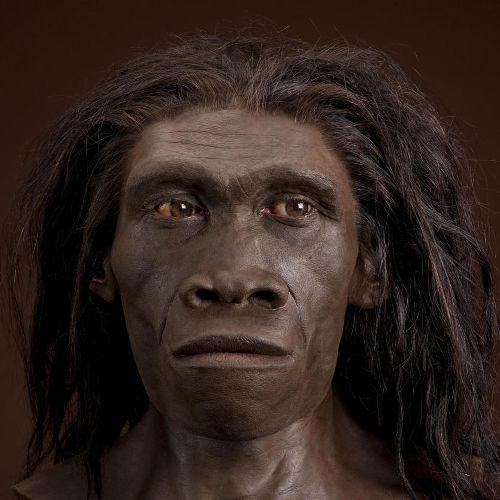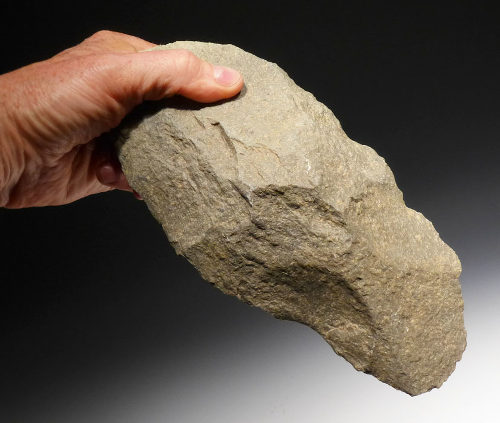This week’s column is prompted by two reports last week that made global news. Although reproduced in local media, they would hardly have been expected to create waves within non-academic communities.
One of these reports welcomed a new frontier of knowledge of human evolution: the CNN headline, “Modern fossil find rewrites human history” was an encryption of its significance. The other story featured the protest of the indigenous peoples of Australia against the national celebration of the day that commenced their annihilation by European settlers. Both are connected to the epic journey of the first humans “out of Africa.”

Some scholars believe all races came from this tribe.
The human fossils were found in a cave in Misliya, Israel. The leader of the project, Professor Israel Hershkowitz, reported in the journal Science: “What Misliya tells us is that modern humans left Africa not 100,000 years ago, but 200,000 years ago. This is a revolution in the way we understand the evolution of our own species.”
This find reconfirms Africa as the birthplace of humanity as well as the birthplace of many of the world’s earliest and longest-lasting technologies.
It also validates otherwise chronologically problematic archaeological finds in Attirampakkam (near Chennai) in India that establish a presence of anatomically modern humans 175,000 years ago. Notwithstanding this advance in knowledge, elements of H. Sapiens toolkit in Attirampakkam with dates earlier than 200,000 years still remain unexplained.
Despite the overwhelming fossil and DNA evidence, the subject of evolution remains unknown to the vast majority of the world’s population. Even where it is a component of schools’ curricula, students are generally not introduced to it before senior high school, and even so, only as a minor segment of biology or geography. Many countries adopt a conservative “human exceptionalism” approach by teaching evolution of lower animals and plants while excluding human evolution.
Modern humans belong to the species Homo sapiens (Homo indicates the genus, shared with other species, and often abbreviated H). There are older genera of hominids (a generic name for all early human ancestors) along the human evolutionary path.

(Copyright Humanorigins.si)
The first species to journey out of Africa as early as one million years ago was H. erectus, our immediate ancestor. Although the inter-continental fossil record as well as mitochondrial DNA studies firmly establish that all modern humans are descendants of an African H. sapiens ancestor, anthropologists still debate three main theoretical models: (1) that H. erectus evolved into modern humans while out of Africa (2) that H. erectus was replaced by H. sapiens, and (3) that H. erectus interbred in several locations with H. sapiens to produce the human variety we know today.
Whatever the model, the consensus is that humanity originated in Africa.
The term “out of Africa” comes from a proverb dating back to Greek philosopher, Aristotle (4th Century BCE), although Africanists invariably associate the origin with 1st Century CE/AD Roman statesman-scholar, Pliny: “semper aliquid novi africam adherre” (“There’s always something new coming out of Africa”).
Parenthetically, the word Africa was not then applicable to the entire continent. In modern times, the final words of the phrase have been reserved almost exclusively to describe the movement of hominids from Homo erectus to pre-modern Homo sapiens from their African homeland to populate the world.
The earliest hominids migrated out of Africa equipped with technologies developed within Africa, some of which lasted more than a million years and spread all over the world. These included the hand axe, bow and arrow, stone-tipped spears, the boomerang, bone tools and fishhooks. An interesting local case in point is the oldest technology discovered in Trinidad, a hand axe (stored at the UWI Archaeology Unit, St Augustine campus), dated c. 7000 years ago, is the same design as the Acheulean hand axe first developed in Africa about 1.5 million years ago.

Wave upon wave of Homo sapiens left Africa to domesticate new lands, probably following game to satisfy their basic needs, but also motivated by the same insatiable human curiosity that inspires humans to attempt fantastic individual challenges, such as conquering mountain tops, great ocean depths, the earth’s magnetic poles and outer space.
With utmost courage and daring, our earliest ancestors—men and women jointly—took African technologies as well as African beliefs and religious motifs to much of the ancient world. Archaeological evidence also suggests an African presence in South America as early as 15,000 BCE.
These explorers, adventurers, colonisers and indigenous settlers are the first subjects of world history but their exploits and achievements hardly get the credit they deserve. Pockets of descendants of these early migrants still exist, with distinct “Africoid” features, in remote parts of India, China, the East Indies, Australasia, and beyond (see Runuko Rashidi, African Presence in Early Asia, 1995).
Many of these ancient populations are now facing extinction, in some cases, under racist eugenics policies. The Australian Aborigines, who arrived in the continent between 80,000 and 100,000 years ago, naturally reject the celebration of “Australia Day”, the day of the arrival of the first Europeans; instead, they remember it as “Invasion Day,” the beginning of their genocide orchestrated by European colonisation.

The theory of evolution, as we know it, was unfolded in two major publications by Charles Darwin. The first was The Origin of the Species by Natural Selection in 1859. This work restricted evolutionism to the “lower” animals. The big shocker was saved for some 15 years later, with the publication of The Descent of Man and Selection in Relation to Sex (1874).
Parenthetically, Darwin’s androcentric evolutionism has been challenged by feminist anthropologists, the signature work being The Descent of Woman: The Classic Study of Evolution (1972) by Elaine Morgan.
The embrace of human evolution as authentic knowledge offered the world the first alternative to explaining the origin of life (but more particularly, and more controversially, the origin of humanity) outside of mythology, cosmology or religion.
Most religious persons instinctively reject evolution, even without knowing where their religious authorities stand on the subject. Below is a brief commentary on three of the world’s most influential religious systems in modern times.
Christian authorities are divided on human evolution. Evangelicals absolutely reject the theory. In the USA, they have countered with the pedagogy, “intelligent design,” mainly to beat the legal prohibition against teaching creationism. Most critics, however, recognise intelligent design as pseudoscience. Yet, I would argue that Darwin was not completely averse to thinking along the lines of intelligent design. If not, what did he mean by these words in The Descent of Man?

“There is a grandeur in this view of life, with its several powers, having been originally breathed into a few forms or into one; and that…from so simple a beginning endless forms so beautiful and most wonderful have been, and are being, evolved.” [Emphasis added]
The Roman Catholic Church was the first Christian faith to put an official stamp on human evolution. This fact may shock its adherents because of the Church’s long history of persecuting scientists for challenging religious dogma. The case of Galileo Galilei may be the best known example in Western Christendom but it certainly is not the only one. Protestant authorities also persecuted their share of scientists: a famous case was that of Spanish physician Michael Servitus, who was tortured and burnt on John Calvin’s authority in Switzerland.
The first Christian compromise was Pope Pius’ 1950 encyclical, Humani Generis (The Origin of Humanity), which simply stated that the Church had “no objection” to discussing the science of evolution. But it also cautioned against the risk of exponents of the subject falling prey to communism and, consequently, atheism.
In 1996, shortly after a major hominid fossil find in Kenya, Pope John Paul II pushed the Church’s lever of tolerance as far as it could possibly go without completely destroying the Bible’s Genesis story of creation.
The Pope first communicated the new position of the Church to “the Pontifical Academy of Sciences, a body of experts that advises the Roman Catholic Church on scientific issues” (Reuter article by Paul Holmes reported in the T&T Newsday, 26 October 1996).

The Pope’s message read: “Today, nearly half a century after the appearance of the encyclical [Humani Generis], fresh knowledge leads to recognition of the theory of evolution as more than just a hypothesis.” While conceding “…the human body has its origin in living material that pre-exists it,” the Pope, however, sought refuge in the one aspect of religion so far completely immune to scientific attack, by declaring, “…the spiritual soul is immediately created by God.”
This dualism toward evolution is also evident in modern Islamic and Hindu thought.
Between 830 AD when Muslims set up their first major repository of knowledge called the “House of Wisdom” in Baghdad and 972 AD when their first major degree-granting institution, Al-Azar university in Cairo was set up, Muslims became the ancient world’s leading mathematicians, geographers and scientists.
“Islamic science,” however, has always had to reconcile with Qur’anic teachings. This compromise reflects the nature of the reception of Darwinian evolutionism in Islamic institutions of higher learning.
Many predominantly Muslim countries teach evolutionary biology of non-humans (microbial and “animal”) but steer clear of human evolution. For example, in Morocco, Egypt, Palestine, Egypt, Turkey, Pakistan, Malaysia and the United Arab Emirates, human evolution is taught—or, at least, acknowledged—in tertiary level biology courses. In places like Saudi Arabia, Yemen, Oman and Iraq, such teaching is forbidden.

Muslim teachers of evolution reconcile the subject with several surah (Qur’anic chapters or verses). For example, the six-day creation could extend to hundreds of thousands of years (and much longer) by re-interpreting yaum (day) to be a period of up to 50,000 years, and even of indeterminate length. But there is still no compromise that Allah created Adam and Hawwa (Eve) in the form of modern humans.
Muslims continue to face deadly consequences for advocating human evolution, even in a scientifically advanced, secular country. For example, in 2011, Usama Hasan, Imam of a London (UK) mosque, received a death threat for publicly supporting human evolution (reported in The Guardian [UK], 11 January, 2013).
Hindu scholars are more partial to human evolution than Muslims; but, like Muslims and Christians, they invariably wrap their interpretation around scripture, such as the Ramayana. For Hindus, the doctrine of rebirth and the sequence of Vishnu avatars (incarnations) facilitate acceptance of evolutionism but not Darwinianism.
Unlike Christian teaching, the soul in Hinduism is subject to rebirth 84 lakh (8.4 million times) before attaining human form. On the other hand, Darwinian theory focuses exclusively on material processes.
The deflection to doctrines of the soul minimises the conflict between science and faith on the question of human origin and secures to creationists the continuing relevance of religion, while blindfolding them to the wonders of evidence-based history of humankind in an ever-unfolding story that covers millions of years more than the boundaries set by creationism.

(Copyright Getty)
Claudius Fergus is a retired Senior Lecturer in the Department of History at UWI’s St Augustine Campus who specialises in the abolition of British colonial slavery and its transatlantic slave trade.
His major work on the subject is Revolutionary Emancipation: Slavery and Abolitionism in the British West Indies (2013). He has other extensive publications in peer-reviewed journals and edited books.
 Wired868 Wired868 for smart sport news and opinion
Wired868 Wired868 for smart sport news and opinion







It was only when attending a Presbyterian school that I realized that not all Christian sects have a problem with accepting an Old Earth, Out of Africa Human Story and Evolution as valid scientific theory.
A’Level Biology began with Evolution as the foundation. A’Level Geography was based on an old earth not a young earth like Creationists believe and no Noah’s flood 6000 years ago either. The History I took from Forms 1 through 3 started with Early Man and explored civilizations older than the chronology I was being taught in the American Evangelical sect to which my parents belonged. Imagine how my mind was blown!
Well that was a meaty and satisfying read!
http://www.independent.co.uk/news/science/how-one-ancestor-helped-turn-our-brown-eyes-blue-776170.html
Ready or not, it’s time for Trinbagonians to dump these religions, starting with the Christian ones left over from slavery. Evolution suggests that a morality based on the longevity of our species; the measure of reflexes and the logic of fairness easily replaces the well trodden European and Asian models.
How they turned blond and blue eyed?
It is a mistake to call any of the first two chapters of Genesis “accounts of Creation”. They are not. The seven era narrative shown to Moses was concerning the seven periods of time that Yehovah was revealing to Moses, on Mt. Sinai, in 1598 BC. It was one day each, taken from seven different weeks, which were the first week of the seven eras. The first was Creation Week, represented by the Fourth Day, followed by six Restoration Weeks. Five of the periods are from the ancient past. One is of our own period (second day), and one is of a future period (third day, feast of Tabernacles), when Yeshua will dwell on Earth and rule all the universe from the New Jerusalem. Starting with Passover (Wednesday), the 12-hr days follow
the sequence of the seven Feasts of the Lord, given to Israel. The second chapter of Genesis begins the history of modern man, which began in 7,200 BC. Therefore, any creationist that claims the dinosaurs and dimetrodons died in Noah’s flood (2611 BC) is a clown.
Herman Cummings
ephraim7@aol.com
Replacing one silly mythology with another silly mythology.